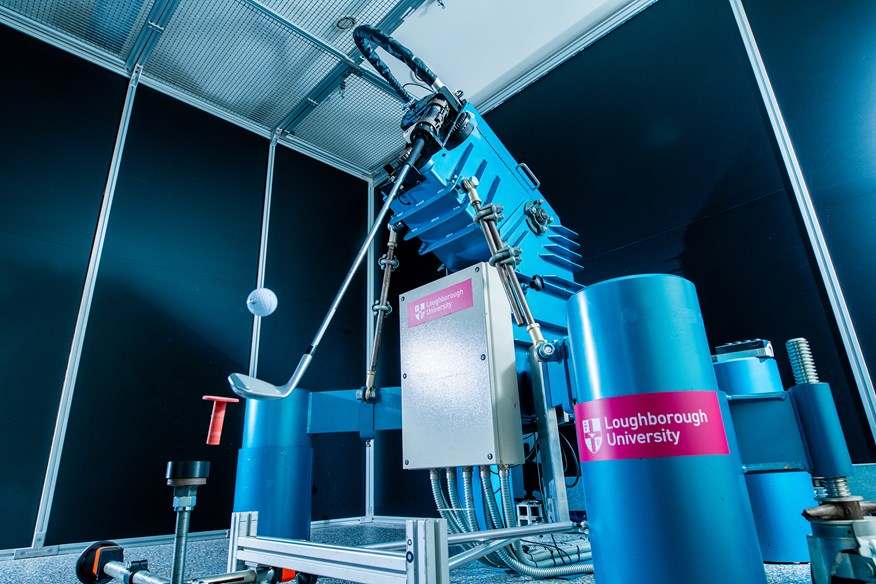2025 golf ball robot test: 62 balls, 2,232 shots, 50,000 data points… find out what’s No.1 for you
Last updated:
It’s the only piece of equipment you use for every shot, so we broke the bank to perform our most in-depth robot test ever and find the right golf ball for your game.
In our pursuit of data-driven performance insights, we’ve taken golf ball testing to a new level in 2025. Working with Loughborough University’s Sports Technology Institute and supported by Ping, we’ve put 62 golf balls through a rigorous, robot-led testing process – delivering more than 2,200 shots of reliable, repeatable data to help you find the best ball for your game.
This is the most extensive and most detailed golf ball test we’ve ever conducted – and one of the most comprehensive in the industry. Every model was tested using a high-precision robotic swing machine to eliminate human variability and generate consistent strike patterns at multiple swing speeds. The result? Pure performance data you can trust.
Here’s everything you need to know about how we did it, why we did it, and what we included.
JUMP TO:
- Why robot testing matters in 2025
- What’s new in this year’s test
- Who we work with on the balls test (and why)
- Meet the experts
- The robot, the setup, the environment
- How we tested: Swing speeds, shots, clubs and shafts
- Which balls we tested (and how we chose them)
- Golf ball constructions explained
- How we selected the winners
THE WINNERS (AND LOSERS):
- The results – compare every golf ball!
- Best golf balls 2025 – the best by category
- Best 4 and 5-piece golf balls
- Best 3-piece golf balls
- Best 2-piece golf balls
- Best golf balls for fast swing speeds
- Best golf balls for average swing speeds
- Best golf balls for slow swing speeds
- Best golf balls for distance
- Best golf balls for approach play
- Best golf balls for short game
- Best golf balls for mid-handicaps
- Best golf balls for beginners
- Most consistent golf balls
Why robot testing matters in 2025
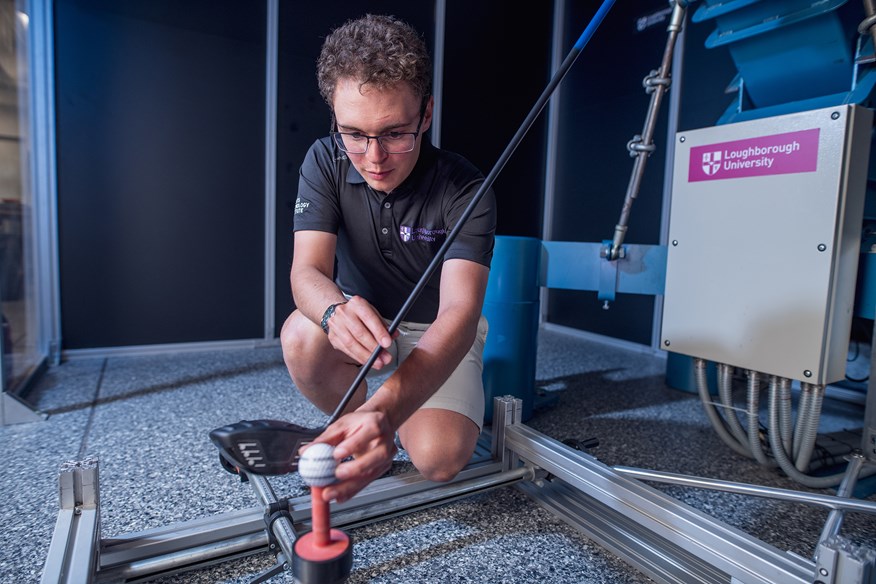
Unlike player testing, where swing inconsistencies, fatigue, and subjective feel influence outcomes, using an R&D (Research & Development) swing robot, just as the brands do, lets us control every variable: swing speed, launch angle, attack angle, spin loft, and strike location. It’s exceptionally costly, lengthy and complicated, but it means we can give you clean, comparable results across all 62 balls and pinpoint how each model performs for different swing profiles.
We tested every ball at three distinct swing speeds (slow, mid, fast) to reflect the full spectrum of amateur golfers – from senior players and high handicappers to faster-swinging, low-digit players. We captured and analysed distances, spin rates, launch angles, peak heights, and descent angles in detail.
What’s new in this year’s golf balls robot test
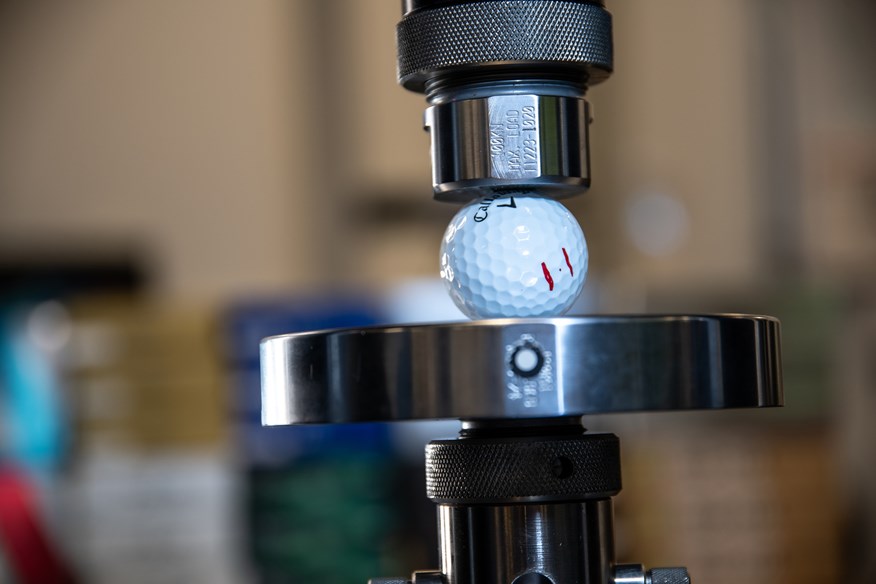
Since starting our robot testing in 2019, we’ve averaged 24 balls per year. In 2025, we’ve nearly tripled that to 62, covering the most played, most talked-about, and most innovative models across every major brand. From urethane-covered tour balls to lower-compression distance models, no category was left out.
We also introduced a compression test and heavily refined our shot protocols to reflect real-world conditions more accurately, improving both the relevance and precision of our results.
No two golfers are alike – and the right ball for one player might be the wrong choice for another. This test is built to help you understand how specific balls perform for your swing characteristics – so you can stop guessing and start playing with confidence.
Who we work with on the golf balls test (and why)
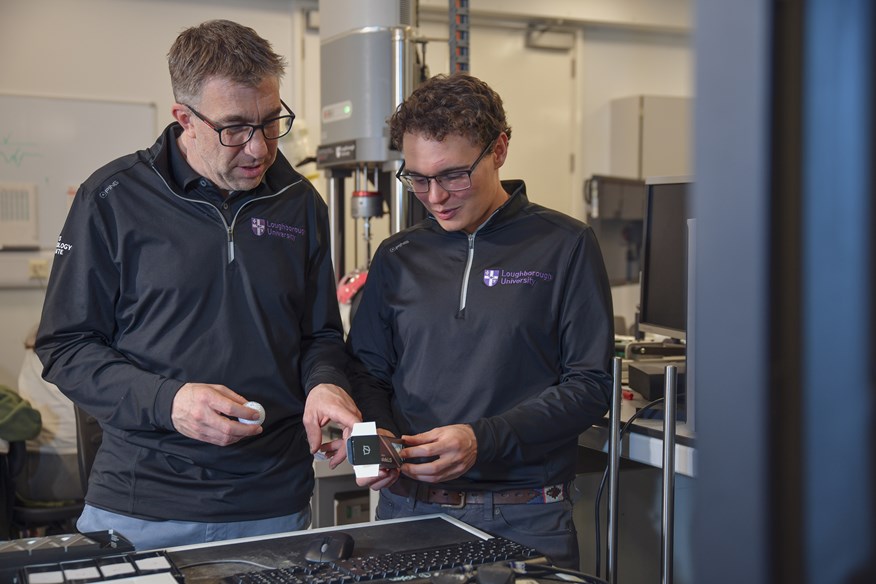
Loughborough University Sports Technology Institute
We test at Loughborough University Sports Technology Institute as it is the world’s leading sports science university for its facilities, expertise, and neutrality, with no commercial ties or bias to any golf ball manufacturer. This partnership, now into its third cycle of testing, ensures a controlled environment and methodical oversight with no brand influence on outcomes.
With golf robots costing upwards of $100,000, few are available – and most belong to brands that manufacture golf balls, raising clear conflicts of interest when testing competitor products.
That’s why collaborating with Loughborough University’s Sports Technology Institute makes strategic sense.
The partnership was initially introduced by Ping, who have invested in an on-campus R&D lab. With Senior Lecturer and golfer Dr. Roberts supporting the project, and months of careful setup and calibration, this collaboration continues to provide unmatched testing integrity for 2025.
Ping
Ping supports our process and provides the clubs used in testing. Crucially, Ping don’t make a golf ball, which removes any question of bias when we’re testing balls from competing brands.
The experts running the test

Dr. Jonathan Roberts (above, left)
Senior Lecturer, Loughborough University (Sports Technology Institute)
Over 25 years at Loughborough; Callaway-sponsored PhD on the feel of golf shots; consultant to Nike and Ping; contributor to Adidas’ elite research group; a key figure in the design and development of every FIFA World Cup football over the past two decades.
James Morris (above, right)
Research Associate, Sports Technology Institute
Loughborough PhD (Adidas-sponsored) on garment/skin relative motion; teaches robotic testing; contributed studies on impact paints in golf club testing; aerodynamics research supporting the 2024 and 2026 UEFA European Championship match balls; pivotal to our 2024 and 2025 robot tests, including the introduction of compression testing this year.
The robot, the setup, and the environment
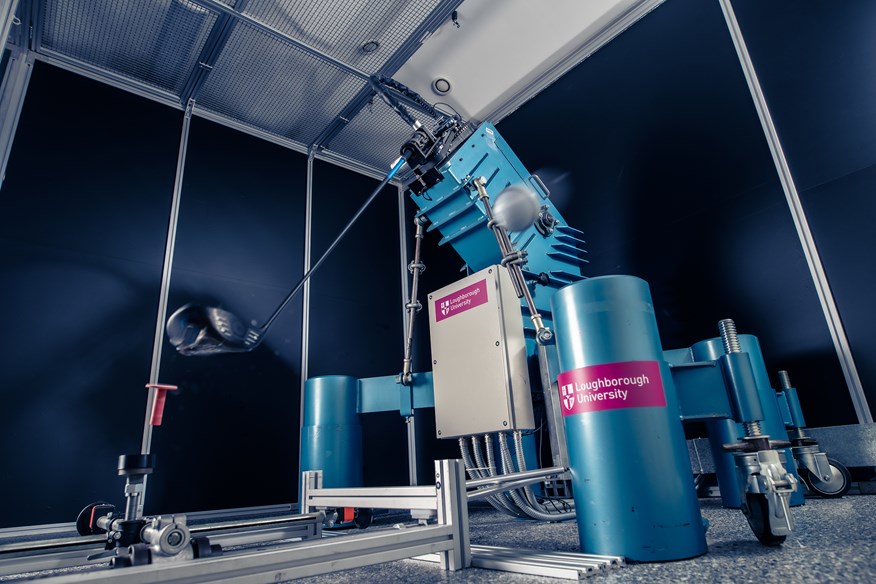
This is no ordinary robot
Loughborough’s primary R&D robot is the Miyamae Shot V, a Japanese-built machine that originally cost $100,000. Unlike the more common Golf Labs robot, the Miyamae runs on three independently controlled axes, allowing it to mimic a real golfer’s swing – not just repeat the same motion.
Over the years, Loughborough’s engineers have overhauled the mechanics and redesigned the control interface, making it uniquely capable among golf robots. Dr. Jonathan Roberts led efforts to evolve it from a basic swing repeater into a tool that replicates real-world swing dynamics. The swing originates from a central hub (like a golfer’s chest), with independent wrist cocking and shaft rotation to realistically simulate hand action through impact. The result: a robot capable of replicating virtually any golf swing.
Setting up the robot

With such adjustability, setup takes time – both to hit the intended parameters and to repeat them consistently.
Drivers: neutral swing path and neutral angle of attack to reflect how human golfers launch drives.
Irons and wedges: descending-blow launch characteristics dialled in within the robot’s control system.
Motion capture: Dr. Roberts’ biomechanical swing analysis (part of a next-gen Ping system) informed the robot programming so every shot reflected real-world swing dynamics.
“Most R&D robots start swinging from parallel and pause at the top. Our robot recreates how somebody loads the shaft, with a natural transition and realistic shaft deformation,” Dr. Roberts said.
Switching between club types – especially driver to wedge – can take hours. This year, configuring the new 40-yard wedge shot took even longer than full-swing drivers and irons.
Why we tested indoors
Loughborough’s indoor lab gave us a fully controlled environment, free of wind, and fluctuations in temperature and humidity – critical when you’re hitting thousands of shots over multiple weeks. Indoor testing pairs perfectly with Foresight GCQuad, which captures all critical launch and spin data within the first 18 inches after impact, allowing precise modelling without relying on full-flight observation. We asked leading brands and The R&A for drag coefficient data per model so Loughborough could run ball-specific flight modelling, where supplied.
Test design: Swing speeds, shots, clubs and shafts
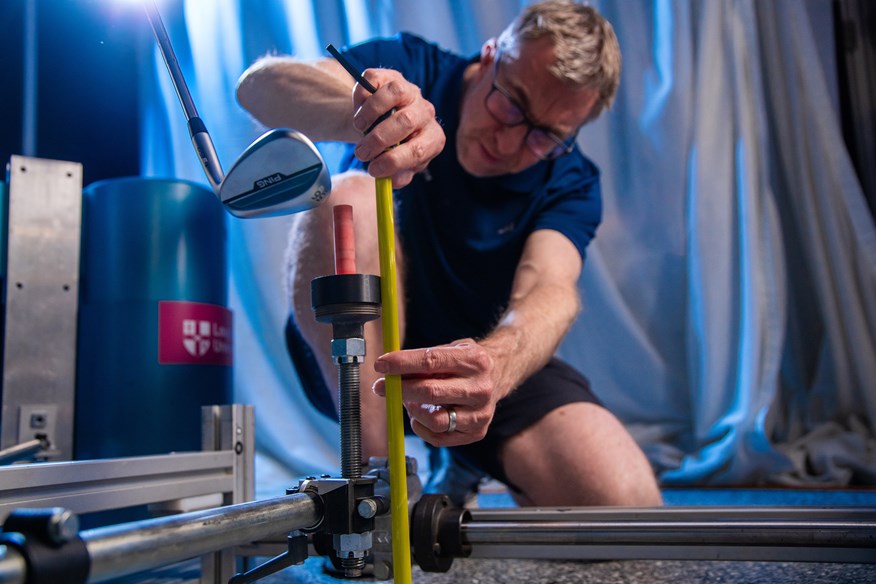
With a plethora of metrics more accessible than ever thanks to continual advances in motion capture systems and shot tracking technologies, golfers are spoiled for choice when seeking data to help them understand and improve their game.
Understanding what it all means, however, is key to making those numbers meaningful, as opposed to simply nice to know.
Before conducting any equipment tests at Today’s Golfer, we ask ourselves ‘What question are we trying to answer?’, and work on the most appropriate methods to answer it.
Three key principles we consider are:
- Validity – does the study measure what we say it’s measuring?
- Accuracy – how close is the measurement to the true value?
- Reliability – would we see consistent results if we repeated the test?
And in the case of quantifying the performance characteristics of 62 different golf balls, we believe that the combination of a robot-controlled swing with industry-leading launch monitor technology is the gold standard.
Swing speeds and shot types
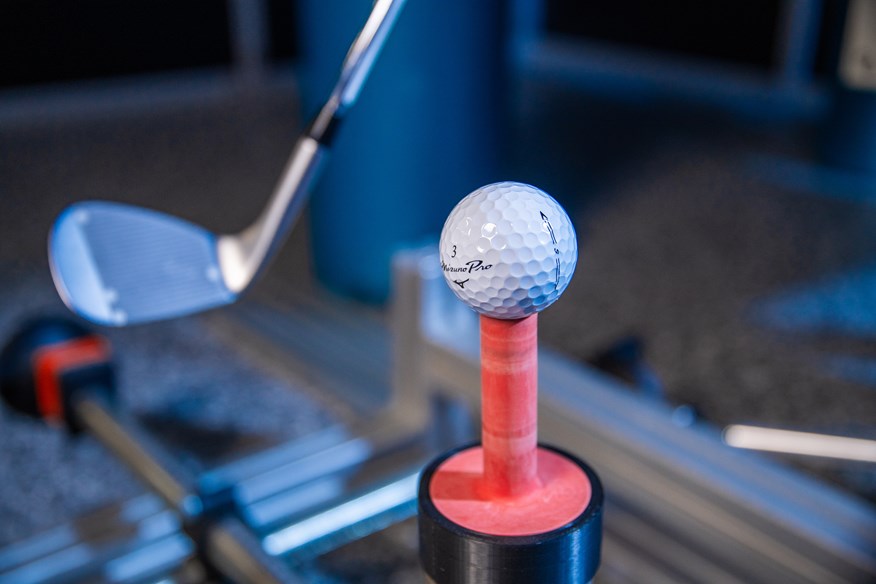
We updated the driver swing speeds to mirror real-world averages better while still representing the full range of golfers. We then aligned our 7-iron speed to the average driver speed, for consistency, before making a significant change to our wedge shot, switching from a full PW in 2024 to a partial 56º shot in 2025 to replicate a 40-yard shot. We felt that the difference between the 7-iron and PW in previous tests did not provide a significant enough shift in data.
Driver: 114 mph (DP World Tour & PGA Tour average), 93 mph (LPGA & male club golfer average), 78 mph (female club golfer average).
7-iron: 80 mph (aligned to the 93 mph driver).
56º wedge: 46.5mph (40 yards) We replaced last year’s full pitching wedge with a 40-yard pitch shot, replicating a typical miss-the-green recovery. We didn’t just program a yardage; we matched a specific angle of attack and dynamic loft.
Clubs and shafts used
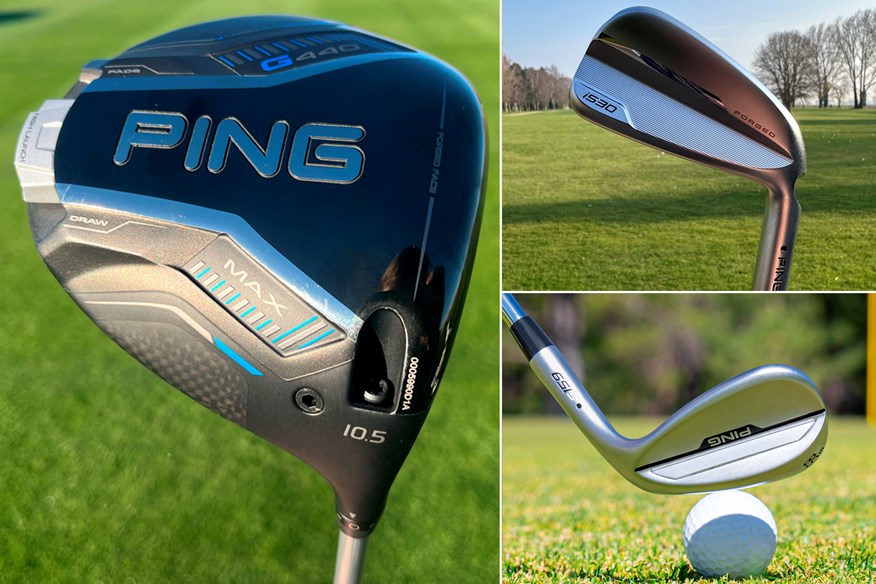
One of the most critical factors in our robot testing is to remove any possible bias and that’s why we choose Ping clubs to hit the shots. Not only do Ping produce some of the best golf clubs in the business, but they also don’t make a golf ball, so it ensures we maintain independence.
Driver: 10.5° Ping G440 Max across all speeds; Ping Tour 2.0 Black 65 X shaft at 114 mph, Ping Alta CB Blue 50 S shaft at 93 mph, Ping Alta CB Blue 50 R shaft at 78 mph.
7-iron: Ping i530 with AWT 2.0 stiff shaft.
Wedge (40-yard pitch): Ping S159 56° with Ping Z-Z115 wede-flex shaft.
- Best drivers 2025 – our data-backed test
- Best irons 2025 – the best in every category
- Best wedges 2025 – the year’s spin kings
What data did we capture (and why)?
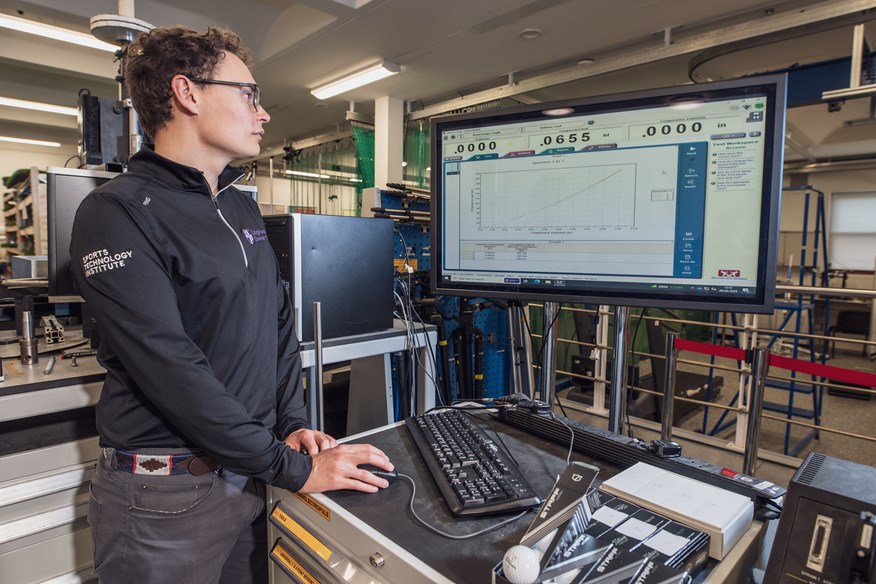
From 22 ball/club/flight variables recorded by GCQuad, we distilled six on-course-meaningful metrics:
- Ball speed (mph): The main component in generating distance and provides a measure of how fast your ball leaves the club head after impact. Measured directly by GCQuad.
- Launch angle (°): Another key component in determining ball flight and measures the vertical angle at which the golf ball initially travels after impact, relative to the ground. Measured directly.
- Backspin (rpm): The backward rotation of the ball around its horizontal axis that creates curvature and lift. Measured directly.
- Carry distance (yds): How far the ball travels in the air from the point of impact to the first landing. Modelled outcome.
- Height (yds): The maximum height the ball reaches before it starts its descent. Modelled outcome.
- Descent angle (°): The angle at which the ball approaches the ground, with steeper angles (closer to 90°) playing a key role in determining how quickly a ball will stop after landing. Modelled outcome.
We used a published ball flight model developed by Professor John McPhee (University of Waterloo in Canada). We cross-checked against Ping’s flight model during processing to ensure outcomes were in good agreement.
Why do we hit each ball more than once?
In previous years, each ball was struck once. In 2025, after consulting Loughborough and industry R&D experts, we confirmed that multiple strikes (max three) do not compromise accuracy.
Driver: One ball struck three times – once at each speed. Following the Mullins effect (materials soften slightly after first loading), we hit fast, then mid, then slow.
Irons and wedge: Each ball was struck twice – once with a 7-iron and once with the 56° wedge.
Quality control: Any abnormal performance was immediately removed, replaced, and retested. We also cut open any balls that produced an abnormal performance to check the construction.
Volume of Testing
Shots recorded: 2,232.
Data points: 50,000+ (19 core GCQuad metrics per shot + compression parameters).
Compression trials: 1,116 (18 balls per model).
Compression test (new for 2025)
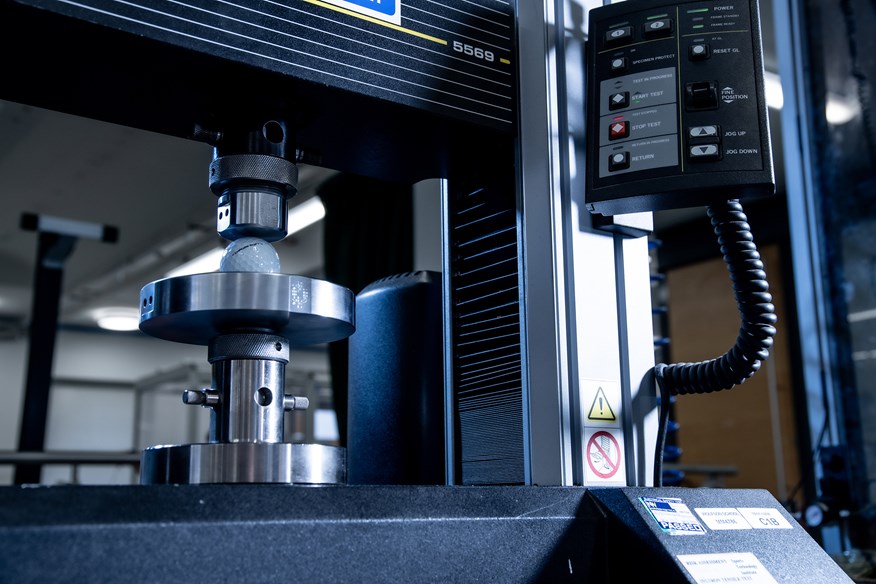
This year saw us undertake a compression test for the first time, helping us to understand how golf balls behave under applied compressive force, and more importantly, how close this score is to those published by manufacturers. That score effectively tells us how soft or firm a ball is – the more a ball compresses under pressure, the softer it is and the lower its rating. Firmer balls compress less and have higher numbers.
Alongside the experts from Loughborough University and advice received from The R&A, we devised a bespoke compression test that measured the deformation of 18 balls of each model (1,116 trials) using Instron 3365 force equipment.
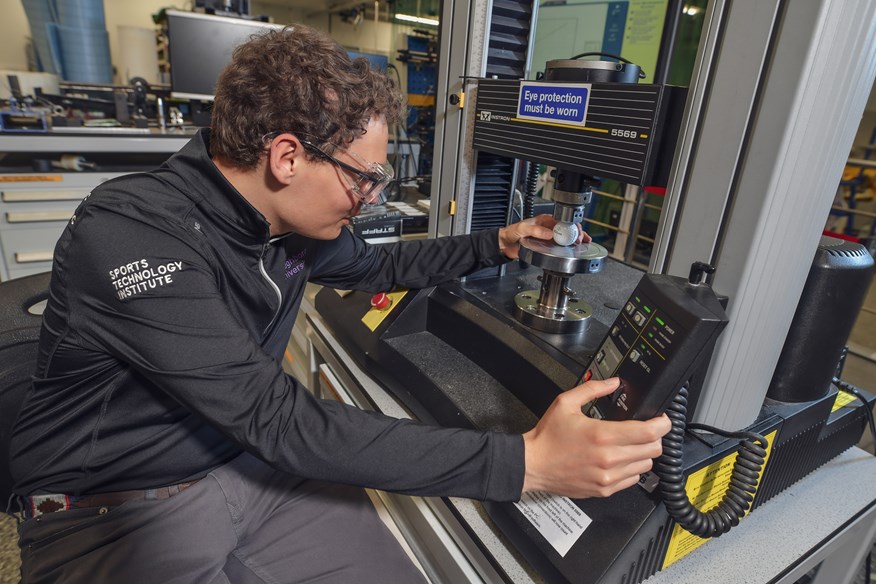
Cycles: Pre-conditioning at 200 lbf to address Mullins effect, then two 100 lbf cycles with 15-second gaps.
Reporting: We used the second cycle to determine the compression value.
Method: Balls were “gently squeezed” from 8–100 lbf, measuring deformation in tiny fractions of an inch; we then applied the standard deformation formula to obtain each ball’s compression rating.
Interpretation: More deformation = softer (lower number); less deformation = firmer (higher number).
Why haven’t we published dispersion data this year?
Manufacturers often cite dispersion/shot areas as a marker of forgiveness or accuracy. After expert consultation, we accepted that landing-position variation in this context is as likely to stem from minute robot swing variations and measurement error in Foresight metrics as from true ball-to-ball differences. Without complete confidence in attribution, we omitted dispersion from 2025 reporting.
Which balls we tested (and how we chose them)
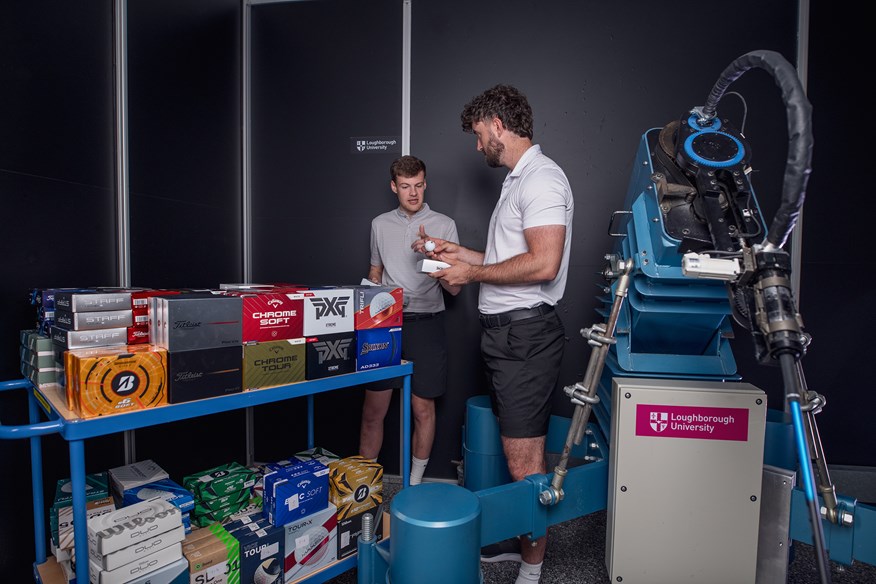
We began with a shortlist of 80, analysed usage data and search trends, and reduced to 64. Two models were unavailable (one delayed launch, one withdrawn), leaving 62 balls for testing. With Direct-to-Consumer (DTC) balls growing, we included 11 leading DTC models, more than ever. One notable absence is the Legato LTX 3085 – a team and reader favourite – which will feature in future testing (you can read our full review here).
Of the 62 balls, 45 are in their current generation and tested for the first time in 2025. Seventeen also appeared in our 2024 test; we retested them, so every result comes from identical conditions – data from different years should not be compared directly. To reflect the market, we included multiple 2-piece, 3-piece, 4-piece, and 5-piece balls. Three-piece models are split into Club Golfer and Tour-Level categories based on professional usage and our expert assessment of each model’s positioning.
| Category/Construction | Brand | Model | Cover |
| 5-piece Tour | TaylorMade | TP5 | Urethane |
| 5-piece Tour | TaylorMade | TP5x | Urethane |
| 4-piece Tour | Callaway | Chrome Tour | Urethane |
| 4-piece Tour | Callaway | Chrome Tour Triple Diamond | Urethane |
| 4-piece Tour | Callaway | Chrome Tour X | Urethane |
| 4-piece Tour | Maxfli | Tour X | Urethane |
| 4-piece Tour | Seed | SD-02 | Urethane |
| 4-piece Tour | Titleist | Pro V1x | Urethane |
| 4-piece Tour | Titleist | Pro V1x Left Dash | Urethane |
| 4-piece Tour | Vice | Pro Plus | Urethane |
| 4-piece Tour | Wilson | Staff Model | Urethane |
| 4-piece Tour | Wilson | Staff Model X | Urethane |
| 3-piece Tour | Bridgestone | Tour B X | Urethane |
| 3-piece Tour | Bridgestone | Tour B XS | Urethane |
| 3-piece Tour | Maxfli | Tour | Urethane |
| 3-piece Tour | Maxfli | Tour S | Urethane |
| 3-piece Tour | Mizuno | Pro S | Urethane |
| 3-piece Tour | Mizuno | Pro X | Urethane |
| 3-piece Tour | PXG | Tour | Urethane |
| 3-piece Tour | PXG | Tour X | Urethane |
| 3-piece Tour | Seed | SD-01 | Urethane |
| 3-piece Tour | Seed | SD-X1 | Urethane |
| 3-piece Tour | Srixon | Z-Star | Urethane |
| 3-piece Tour | Srixon | Z-Star Diamond | Urethane |
| 3-piece Tour | Srixon | Z-Star XV | Urethane |
| 3-piece Tour | Titleist | Pro V1 | Urethane |
| 3-piece Tour | Vice | Pro | Urethane |
| 3-piece Club Golfer | Bridgestone | Tour B RX | Urethane |
| 3-piece Club Golfer | Bridgestone | Tour B RXS | Urethane |
| 3-piece Club Golfer | Bridgestone | e12 Straight | Urethane |
| 3-piece Club Golfer | Callaway | Chrome Soft | Urethane |
| 3-piece Club Golfer | Callaway | ERC Soft | Urethane |
| 3-piece Club Golfer | Kirkland | Signature V3.0 | Urethane |
| 3-piece Club Golfer | Maxfli | TriFli | Urethane |
| 3-piece Club Golfer | Seed | SD-05 | Urethane |
| 3-piece Club Golfer | Srixon | Q-Star Tour | Urethane |
| 3-piece Club Golfer | TaylorMade | Tour Response | Urethane |
| 3-piece Club Golfer | Titleist | AVX | Urethane |
| 3-piece Club Golfer | Vice | Pro Air | Urethane |
| 3-piece Club Golfer | Vice | Tour | Surlyn |
| 3-piece Club Golfer | Wilson | Triad | Urethane |
| 2-piece | Bridgestone | e6 Soft Feel | Ionemer |
| 2-piece | Bridgestone | e12 HiLaunch | Ionemer |
| 2-piece | Bridgestone | e12 Speed | Ionemer |
| 2-piece | Callaway | Supersoft | Ionemer |
| 2-piece | Callaway | Warbird+ | Ionemer |
| 2-piece | Maxfli | SoftFli | Ionemer |
| 2-piece | Maxfli | StraightFli | Ionemer |
| 2-piece | Mizuno | RB 566 | Ionemer |
| 2-piece | Pinnacle | Rush | Ionemer |
| 2-piece | Pinnacle | Soft | Ionemer |
| 2-piece | Seed | SD-15 | Ionemer |
| 2-piece | Srixon | Q-Star (AD333) | Ionemer |
| 2-piece | Srixon | Soft Feel | Ionemer |
| 2-piece | Srixon | Ultisoft | Ionemer |
| 2-piece | TaylorMade | Distance | Ionemer |
| 2-piece | TaylorMade | SpeedSoft | Ionemer |
| 2-piece | Titleist | Tour Soft | Ionemer |
| 2-piece | Titleist | TruFeel | Ionemer |
| 2-piece | Titleist | Velocity | Ionemer |
| 2-piece | Vice | Drive | Ionemer |
| 2-piece | Wilson | Duo Soft | Ionemer |
How two, three, four, and five-piece golf balls differ
Two-piece balls
These are generally the most affordable, with a large core and durable ionomer/Surlyn cover – great for durability, distance, and value (especially if you lose balls). There are softer-feel and max-distance variants; our testing helps you weigh the trade-offs vs. premium urethane options.
Three-piece balls
These make up 47% of the models in this year’s test, and add a mantle to fine-tune launch, spin, and feel. Tour-level versions use urethane covers for wedge spin and greenside control; club-golfer versions often lower compression for feel/playability. Modern designs blur old distinctions – the Titleist Pro V1 is now lower-flying/spinning than some four-piece counterparts.
Four-piece & five-piece balls
These are no longer just “firmer X = low spin.” For instance, the latest Pro V1x (four-piece) can be higher-spinning/higher-flying than the three-piece Pro V1. TaylorMade remain the only major brand with five-piece balls – TP5 and TP5x – using three mantles to tune driver spin/launch and short-game spin. Typically, TP5x is faster, longer, and higher-launching; TP5 is softer with more wedge spin and shot-shaping versatility.
How we selected the award winners
We aim to provide representative values for each ball’s critical performance characteristics. While every golfer’s needs are unique (so “best golf ball” is not absolute), standout performers deserve recognition as models likely to suit the broadest range of players.
To select winners across construction groups, we aggregated rankings from five metrics to build an overall performance rankings list:
Driving performance: Ball speed and carry distance.
Approach performance: Descent angle and carry-distance consistency.
Short game performance: Backspin.
If you’re chasing something specific – very low driver spin, higher iron apex, or compression consistency – dive into the detailed tables on our results pages.
What to read next
This page explains why, who, how, and what we tested. For performance insights tailored to your swing speed and preferences, head to our results hubs:
- The results – compare every golf ball!
- Best golf balls 2025 – the best by category
- Best 4 and 5-piece golf balls
- Best 3-piece golf balls
- Best 2-piece golf balls
- Best golf balls for fast swing speeds
- Best golf balls for average swing speeds
- Best golf balls for slow swing speeds
- Best golf balls for distance
- Best golf balls for approach play
- Best golf balls for short game
- Best mid handicaps
- Best golf balls for beginners
- Most consistent golf balls
-
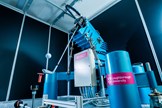 The 2025 robot test saw us put 62 golf balls to the test across three driver speeds, with an iron, and with a wedge, to find the best model for you.
The 2025 robot test saw us put 62 golf balls to the test across three driver speeds, with an iron, and with a wedge, to find the best model for you.
-
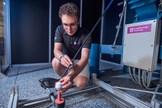 James Morris sets up another golf ball to be hit by the driver for the 2025 robot golf balls test.
James Morris sets up another golf ball to be hit by the driver for the 2025 robot golf balls test.
-
 Programming the robot to swing in the exact way we need to produce accurate data.
Programming the robot to swing in the exact way we need to produce accurate data.
-
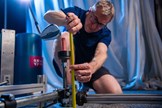 Dr. Jonathan Roberts sets up a wedge shot for the golf balls robot test.
Dr. Jonathan Roberts sets up a wedge shot for the golf balls robot test.
-
 Dr. Jonathan Roberts and James Morris, of Loughborough University, discuss one of the golf ball models during our 2025 robot test.
Dr. Jonathan Roberts and James Morris, of Loughborough University, discuss one of the golf ball models during our 2025 robot test.
-
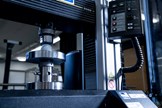 We conducted a compression test as part of our 2025 golf balls robot test for the first time.
We conducted a compression test as part of our 2025 golf balls robot test for the first time.
-
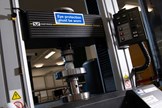 We introduced the golf ball compression test to our robot test for the first time in 2025.
We introduced the golf ball compression test to our robot test for the first time in 2025.
-
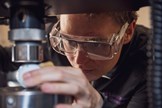 James Morris prepares a golf ball for the compression test.
James Morris prepares a golf ball for the compression test.
-
 James Morris captures the compression data during the Today's Golfer 2025 golf balls robot test at Loughborough University.
James Morris captures the compression data during the Today's Golfer 2025 golf balls robot test at Loughborough University.
-
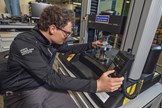 James Morris prepares a golf ball for the compression test.
James Morris prepares a golf ball for the compression test.
-
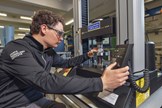 James Morris prepares a golf ball for the compression test.
James Morris prepares a golf ball for the compression test.
-
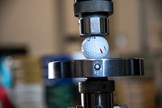 We conducted a compression test as part of our 2025 golf balls robot test for the first time.
We conducted a compression test as part of our 2025 golf balls robot test for the first time.
-
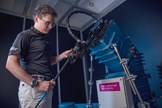 James Morris prepares the robot to hit driver shots as part of our 2025 golf balls test at Loughborough University.
James Morris prepares the robot to hit driver shots as part of our 2025 golf balls test at Loughborough University.
-
 Another ball is put through its paces with a driver in our 2025 robot test at Loughborough University.
Another ball is put through its paces with a driver in our 2025 robot test at Loughborough University.
-
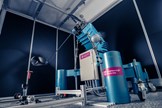 The 2025 golf balls robot test was conducted at Loughborough University using the Miyamae Shot V, a Japanese-built machine.
The 2025 golf balls robot test was conducted at Loughborough University using the Miyamae Shot V, a Japanese-built machine.
-
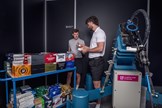 Today's Golfer equipment editor Alex Lodge (right) and equipment writer James Hogg (right) discuss the golf balls being tested by the robot at Loughborough.
Today's Golfer equipment editor Alex Lodge (right) and equipment writer James Hogg (right) discuss the golf balls being tested by the robot at Loughborough.
-
 Loughborough University's Dr. Jonathan Roberts (left), and James Morris, ran the 2025 golf balls robot test alongside our team.
Loughborough University's Dr. Jonathan Roberts (left), and James Morris, ran the 2025 golf balls robot test alongside our team.
-
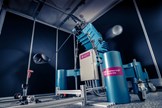 Another ball is put through its paces with a driver in our 2025 robot test at Loughborough University.
Another ball is put through its paces with a driver in our 2025 robot test at Loughborough University.
-
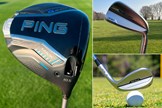 The 2025 golf balls robot test was conducted using a Ping G440 driver, Ping i530 7-iron, and Ping S159 56º wedge.
The 2025 golf balls robot test was conducted using a Ping G440 driver, Ping i530 7-iron, and Ping S159 56º wedge.
-
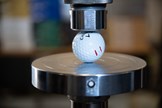 A Callaway ball undergoes the compression test.
A Callaway ball undergoes the compression test.
-
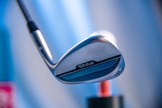 We used a Ping S159 56º wedge for the 2025 golf balls robot test.
We used a Ping S159 56º wedge for the 2025 golf balls robot test.
-
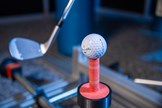 One of the 62 balls in our robot test prepares to be put through its paces with the wedge shot.
One of the 62 balls in our robot test prepares to be put through its paces with the wedge shot.
